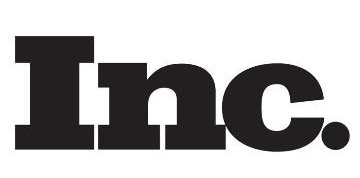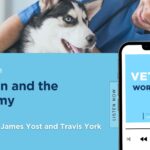
This article appears in Inc.com.
Amid the Great Resignation, economic woes, bitter political divides, a horrifying war on the doorsteps of our European allies, and continued emotional hangovers from the ongoing pandemic, many external forces are affecting our world today. The impact of these doesn’t end when team members start their workdays. That is why it’s important that leaders have an “emotional intelligence toolbox” to pull from, so they can support their team while also keeping themselves grounded and healthy amidst it all.
Toolboxes, as we all know, come in all shapes and sizes and can be filled with many different tools, depending on the person. As a leader, these are my five go-to tools for personal and professional situations.
1. Trigger barometer
As a leader, my ability to address critical issues successfully is often highly correlated with my ability to process my own emotional state quickly and effectively. It is imperative that my responses to others are not reactive or anchored in my own personal issues. Knowing myself and the trigger points that evoke strong emotional reactions is critical to this success.
So, how do you identify triggers? Self-awareness. Whether gained through therapy, meditation, coaching, education, or anything in between, knowing yourself is an important part of identifying your triggers.
To recognize if something has triggered or can trigger you, look for emotions that are both sudden and intense simultaneously. For example, emotions like love are built over time, but triggers happen in the moment and feel almost overwhelming as soon as they start.
When something triggers an intense response, it can inhibit you from having quality discussions around an issue on the table. Why? Because your brain shuts down and prepares for action. Once your brain moves to fight-or-flight mode, little to no space is left for due diligence, curiosity, problem-solving, alignment building, or rational thought. However, if you know and recognize your triggers, you can use other tools to give yourself time, space, or clarity of thought to respond wisely to the situation at hand.
2. Relentless curiosity
One of the best ways you, as a leader, can spot minor issues before they magnify into something more significant is by taking the space to be curious and observe. This requires intentionality. Schedule time to watch, and allow yourself the freedom to be curious about various areas of the business. It can open up opportunities to notice if someone is struggling and enable you to align resources for help before the situation gets out of hand.
Relentless curiosity is also essential in interactions. Curiosity empowers you and the other person in the room because it enables you to ask questions that seek to understand, versus from a place of judgment. Importantly, it also creates space for others to be truly seen and heard. This can change the tone of even the hardest conversations from one of battle to one of compromise.
3. Active listening
This tool is deceptively hard to hone but critically important, as evidenced by humans having two ears and only one mouth. One could infer this is because we are created to listen twice as much as we speak (at least that’s what I tell my 5-year-old.)
There is a difference between hearing someone speak and actively listening to that person. Hearing what someone says means you can simply parrot back some rendition of what they said. Listening to what someone says means you are mentally and emotionally making an attempt to understand their context, meaning, and perspective. In active listening, you pay attention not only to words but to body language — to the things being said but not spoken.
One technique in active listening is watching for nonverbal cues. What is the person’s posture? What facial expressions are you noticing? How is their body responding when you speak? What is their tone? How are they breathing? Another technique in active listening is seeking clarity through confirmation responses — “what I heard you say is…” and “so, I understand you’re feeling….” And always end with, “Did I understand that correctly?”
The beauty of active listening is that your everyday life is an opportunity to practice and hone this skill. And as with any tool, the more it is used, the easier it is to wield.
4. Grace
Some of the most important progress in my career and in our organization has been made when colleagues and I were willing to sit in a space where we disagreed but allowed room for each other’s feelings. I call this “doing hard well.” It is the practice of extending grace. Grace for yourself. Grace for the other person. And grace for the hard space you’re in at the moment.
Grace is defined as courteous goodwill. It is the deliberate assumption of good intentions, especially when the situation or the person has not earned them. It is believing that the other person or people are on your side, doing their best, and not intending harm.
In my opinion, the art and practice of extending grace is the hardest tool to use. First, because it is completely countercultural in our incredibly polarized world. But secondarily, because it requires maturity, a restraint of judgment, and a choice of hope and optimism in the face of intense pessimism. One’s emotional bank must be well-funded in order to extend courtesy, kindness, and love to those who might not deserve them. The ability to sit in and have grace in those hard moments is a powerful tool that can enable you to move through hard moments alongside your team, so everyone (you, the team, and the organization) ends up better on the other side.
5. Integration
Last year, I published a series of blogs for our firm anchored in what we call “the 7 Fs” (family, fitness, friends, faith, fun, freedom, and finances). I wrote about personal experiences and challenges I’d had in these areas, what I’d learned, and what I wished others could know. It was as transparent as I have ever been but necessary to model true integration for our team. Our goal is to authentically create a place where team members can un-silo their lives and safely bring their whole selves to work.
Whether we want to admit it or not, the truth is that your personal life impacts your work, and vice versa. The reality is that work-life balance doesn’t really exist. Sometimes, your personal life will precede your work life, and likewise the other way around. It’s unreasonable to expect your team to keep these two parts of themselves completely separate at all times. It’s also unreasonable to expect the same of yourself.
As leaders, it is our job to create safe environments where whole people can thrive. It looks different for every organization and every team member. However, when done well, true work-life integration creates a space for people to sit in that unique intersection of what they’re passionate about and uniquely gifted to do, which ultimately creates healthier people, teams, organizations, and communities.
As leaders, we must model healthy habits for those we lead. Recently, at SignatureFD, we’ve heard from a lot of our clients that the need to support their teams amidst the upheaval of current events is causing a severe mental impact on their psyche. These five emotional intelligence tools can help leaders support their teams while safeguarding their mental health. Ultimately, this models what it means to be a leader for the future of a more mentally and emotionally healthy world.
As CEO, Heather Fortner, leverages her Master of Science in Professional Counseling to truly listen – to the SignatureFD team, clients, and the industry – to realize the organization’s vision and mission to impact the lives of 10,000 families. A highly sought-after leader in the industry, Fortner is regularly asked to speak on women in leadership, the ever-changing landscape of wealth management, and what it means to break glass ceilings for others.






